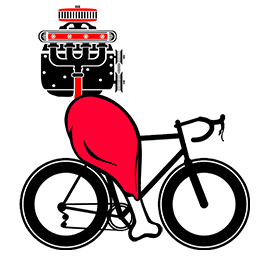Study Summary
Can Endurance Athletes Hit Their Maximal Oxygen Uptake in Any Race Distance?
Researchers tested the idea that endurance athletes can reach their maximal oxygen uptake (VO2 max) in races of any distance, from sprints to marathons. VO2 max refers to the maximum amount of oxygen an athlete can consume during intense exercise and is a measure of cardiovascular fitness. The study looked at 78 highly trained male endurance athletes who competed in distances ranging from 100 meters to marathons.
The results showed that the athletes were able to reach and sustain VO2 max in all race distances studied. The percentage of time spent at VO2 max during sprints, middle distances (800m to 1500m), and marathons was not significantly different. Only for the 3000m distance did athletes spend a higher percentage of the race at VO2 max, which correlated with better performance.
| Distance | Percent of Race at VO2 max | Time in Sec at VO2 max |
| 100m | 25.6% | 3 |
| 200m | 28.5% | 6 |
| 800m | 22.0% | 28 |
| 1500m | 41.7% | 129 |
| 3000m | 51.4% | 341 |
| 10,000m | 30.6% | 680 |
| Marathon | 4.1% | 479 |
Even in the marathon, athletes were at VO2 max for nearly 8 minutes.
The conclusions from this study are:
- Endurance athletes can elicit VO2 max in any race distance, from sprints to marathons. The ability to reach and sustain VO2 max is not limited to middle distances.
- The time spent at VO2 max does not fully determine performance for most race distances. Other factors like running economy, lactate threshold, and anaerobic capacity also play a role. Only for races around 3000m does time at VO2 max seem directly related to performance.
- Endurance athletes should train to maximize VO2 max regardless of their race distance since the ability to reach and sustain it is important for performance at any distance. Higher VO2 max will benefit sprinters and marathoners alike.
For endurance athletes, the practical implications are:
- Train to improve your VO2 max no matter what distance you compete in. It is relevant for performance in all race distances, not just middle distances, as once believed.
- Time spent at VO2 max is not the only determinant of your performance, especially for sprint and marathon distances. Maximize other physiological factors as well with targeted training.
- Choose training that closely mimics the physiological demands of your race distance, including the ability to reach and sustain VO2 max. This sport-specific training will provide the biggest performance benefits.
In summary, this study demonstrates that endurance athletes in any race distance can achieve their VO2 max during competition. While time at VO2 max is relevant for performance, especially in mid-length races, other physiological factors are also important for sprints and marathons. For the best results, endurance athletes should train to maximize VO2 max along with other determinants of performance specific to their event.
Abstract
Maximal Time Spent at VO2max from Sprint to the Marathon
Until recently, it was thought that maximal oxygen uptake (VO2max) was elicited only in middle-distance events and not the sprint or marathon distances. We tested the hypothesis that VO2max can be elicited in both the sprint and marathon distances and that the fraction of time spent at VO2max is not significantly different between distances. Methods: Seventy-eight well-trained males (mean [SD] age: 32 [13]; weight: 73 [9] kg; height: 1.80 [0.8] m) performed the University of Montreal Track Test using a portable respiratory gas sampling system to measure a baseline VO2max. Each participant ran one or two different distances (100 m, 200 m, 800 m, 1500 m, 3000 m, 10 km or marathon) in which they are specialists. Results: VO2max was elicited and sustained in all distances tested. The time limit (Tlim) at VO2max on a relative scale of the total time (Tlim at VO2max%Ttot) during the sprint, middle-distance, and 1500 m was not significantly different (p > 0.05). The relevant time spent at VO2max was only a factor for performance in the 3000 m group, where the Tlim at VO2max%Ttot was the highest (51.4 [18.3], r = 0.86, p = 0.003). Conclusions: By focusing on the solicitation of VO2max, we demonstrated that the maintenance of VO2max is possible in the sprint, middle, and marathon distances.
Journal of Environmental Research and Public Health. 2020; 17(24):9250.
Authors: Claire A. Molinari, Johnathan Edwards, Véronique Billat
https://doi.org/10.3390/ijerph17249250
Listen to the Two Minute Study Summary Audio

Jordan Fowler has experience as a head swimming coach of the Frisco Swim Team, a TAAF-awarded coach, a track and field distance running consultant for select Texas High School runners, and has competed as a triathlete, road runner, and cyclist. Though he is remarkably slower than he was in his 20s and 30s, he still enjoys endurance sports and sports science studies.
